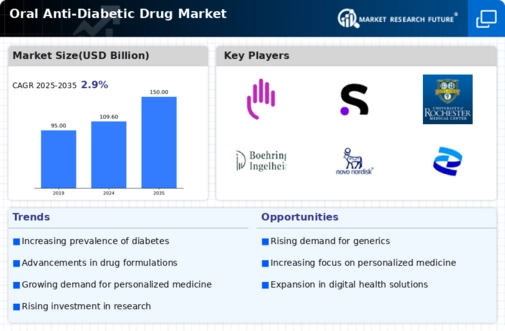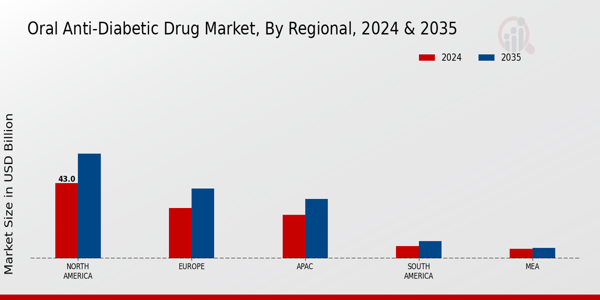The Global Oral Anti-Diabetic Drug Market is characterized by a dynamic competitive landscape, driven by a rising prevalence of diabetes globally, advancements in drug formulations, and a growing emphasis on personalized medicine. As healthcare systems increasingly focus on improving patient outcomes, the competition within this market has intensified significantly. Key players are engaged in extensive research and development activities to introduce innovative therapies, thereby shaping market trends.
The regulatory environment and pricing pressures remain critical factors influencing market dynamics as companies strive to secure a competitive edge through efficient pricing strategies and robust marketing initiatives. In addition, strategic partnerships and collaborations between pharmaceutical firms and research institutions are becoming commonplace, enhancing the competitive environment of the Global Oral Anti-Diabetic Drug Market.BristolMyers Squibb stands out prominently in the Global Oral Anti-Diabetic Drug Market due to its strong portfolio of products that address various needs in diabetes management.
The company has established a reputation for its commitment to research and development, which facilitates the rapid innovation of new oral diabetic medications. Its market presence is bolstered by a well-established distribution network and a solid sales force that effectively reaches healthcare providers and patients alike. BristolMyers Squibb's focus on high-quality scientific research and clinical trials further enhances its credibility, allowing it to maintain strong relationships with healthcare professionals.
The company's focus on strategic collaborations with academic institutions and healthcare organizations also serves to strengthen its position in the market, providing it with the necessary insights and resources to develop cutting-edge medications that improve patient adherence and outcomes.Takeda Pharmaceutical also plays a significant role in the Global Oral Anti-Diabetic Drug Market, leveraging its extensive research capabilities and global reach to enhance its competitive position.
The company has gained recognition for developing innovative therapies that cater to a diverse patient demographic, addressing both Type 1 and Type 2 diabetes. Takeda's strengths lie in its robust commitment to patient-centricity, focusing on the specific needs of diabetic patients, which influences product development decisions.
The company's global presence allows it to effectively penetrate various regional markets, capitalizing on emerging opportunities in developing economies. Furthermore, Takeda's ongoing dedication to improving diabetes care through partnerships with healthcare providers and academic institutions underscores its strategic approach to communication and education, ensuring that both physicians and patients have access to the most accurate and up-to-date information concerning oral anti-diabetic therapies.




















